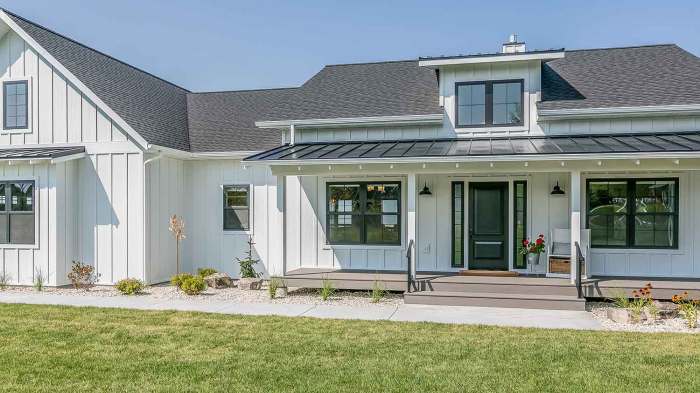Exploring Top commercial real estate investment trends
Delving into Top commercial real estate investment trends, this introduction immerses readers in a unique and compelling narrative. As the real estate market continues to evolve, understanding the latest trends is crucial for investors seeking success. From technology integration to sustainable investments, the landscape is ripe with opportunities and challenges.
Investors must navigate these trends strategically to maximize their returns and stay ahead of the curve. This overview will shed light on the current landscape of commercial real estate investments, providing valuable insights for both seasoned investors and newcomers to the field.
Top Commercial Real Estate Investment Trends
Commercial real estate investment is constantly evolving, with new trends shaping the market and influencing investor decisions. Let's explore some of the top trends currently dominating the commercial real estate investment landscape.
Rise of ESG Investing
Investors are increasingly prioritizing environmental, social, and governance (ESG) factors in their investment decisions. This trend is driving demand for sustainable and environmentally friendly properties, as well as properties that promote social good. ESG investing is not only seen as a way to make a positive impact but also as a strategy to mitigate risk and enhance long-term value.
Adoption of Technology
Technology is playing a pivotal role in commercial real estate investment, revolutionizing how properties are managed, marketed, and analyzed. Investors are leveraging data analytics, artificial intelligence, and virtual reality to make more informed investment decisions and optimize property performance. The adoption of technology is reshaping the industry and creating new opportunities for investors.
Shift Towards Flexibility
The COVID-19 pandemic has accelerated the trend towards flexible workspaces and remote work. As a result, investors are increasingly focusing on properties that offer flexible lease terms, adaptable layouts, and amenities that cater to the changing needs of tenants. This shift towards flexibility is reshaping the commercial real estate market and influencing investment strategies.
Technology Integration in Commercial Real Estate

Technology is playing a crucial role in revolutionizing commercial real estate investments. From data analytics to virtual reality, various innovative technologies are being utilized in the industry to enhance decision-making processes and improve overall efficiency.
Data Analytics
Data analytics tools are being used to analyze market trends, property performance, and tenant behavior. By leveraging big data and advanced analytics, investors can make more informed decisions regarding property acquisition, leasing strategies, and portfolio optimization. This technology allows for better risk assessment and helps identify lucrative investment opportunities.
Virtual Reality (VR) and Augmented Reality (AR)
Virtual and augmented reality technologies are being used to provide immersive property tours to potential investors and tenants. This allows stakeholders to visualize spaces and experience properties remotely, saving time and resources. By incorporating VR and AR into the leasing process, investors can attract more interest and secure deals faster.
Blockchain Technology
Blockchain technology is being adopted in commercial real estate transactions to enhance security, transparency, and efficiency. Smart contracts powered by blockchain can automate processes like lease agreements, property sales, and payments, reducing the need for intermediaries and minimizing the risk of fraud.
This technology streamlines transactions and ensures trust among parties involved.
Internet of Things (IoT)
The Internet of Things is transforming commercial real estate by connecting various devices and systems within properties. IoT sensors can collect data on energy consumption, occupancy rates, and maintenance needs, allowing investors to optimize building operations and reduce costs. By harnessing IoT technology, investors can create smarter and more sustainable properties.
Challenges of Technology Integration
While technology offers numerous benefits to commercial real estate investments, there are also challenges to consider. These include data privacy concerns, cybersecurity risks, initial setup costs, and the need for specialized expertise to implement and manage complex technological solutions. Investors must carefully evaluate these challenges to ensure a successful integration of technology into their investment strategies.
Sustainable Real Estate Investments

In recent years, there has been a significant increase in the focus on sustainable real estate investments within the commercial sector. Investors are increasingly recognizing the benefits of incorporating sustainability practices into their real estate portfolios
Benefits of Sustainable Real Estate Investments
Investing in sustainable real estate offers various benefits, including:
- Improved property value and marketability
- Lower operating costs through energy efficiency
- Compliance with environmental regulations
- Enhanced tenant satisfaction and retention
- Positive impact on the environment and community
Strategy for Including Sustainable Elements
For investors looking to include sustainable elements in their commercial real estate portfolio, it is essential to:
- Conduct a sustainability assessment of existing properties
- Implement energy-efficient practices and technologies
- Seek green building certifications like LEED or ENERGY STAR
- Consider renewable energy sources such as solar panels
- Partner with sustainable-focused property managers and tenants
Emerging Markets and Opportunities
In the ever-evolving landscape of commercial real estate investments, emerging markets present unique opportunities for investors looking to diversify their portfolios and capitalize on potential growth. These markets offer the potential for high returns, but also come with their own set of challenges and risks that need to be carefully navigated.
Analyzing Potential of Emerging Markets
Emerging markets are characterized by rapid economic growth, urbanization, and increasing demand for commercial real estate. Countries like India, Brazil, and Vietnam are considered emerging markets with immense potential for investors due to their growing middle class, infrastructure development, and favorable demographic trends.
- Political Stability and Regulatory Environment: Investors should evaluate the political stability and regulatory framework of emerging markets to ensure a conducive environment for investment.
- Economic Indicators: Analyzing key economic indicators such as GDP growth, inflation rates, and foreign direct investment can provide insights into the economic health of the market.
- Demographic Trends: Understanding population growth, urbanization rates, and income levels can help investors identify sectors with high demand for commercial real estate.
Key Factors for Attractiveness of Emerging Markets
Several factors contribute to the attractiveness of emerging markets for commercial real estate investments, making them a lucrative option for savvy investors.
- Untapped Potential: Emerging markets offer untapped potential for growth and development, presenting opportunities for investors to enter markets at an early stage.
- Diversification Benefits: Investing in emerging markets can provide diversification benefits to a portfolio, reducing overall risk exposure.
- High Returns: The rapid growth and development in emerging markets can lead to high returns on investments, outperforming mature markets in certain cases.
Navigating Risks and Capitalizing on Opportunities
While emerging markets offer promising opportunities, investors must also be aware of the risks involved and develop strategies to mitigate them.
- Market Volatility: Emerging markets can be volatile due to political instability, currency fluctuations, and regulatory changes. Investors should have a risk management strategy in place to navigate market fluctuations.
- Local Expertise: Working with local partners or advisors who have a deep understanding of the market can help investors navigate cultural nuances, regulatory challenges, and local business practices.
- Long-Term Perspective: Investing in emerging markets often requires a long-term perspective to realize the full potential of growth and development. Patience and perseverance are key traits for success in these markets.
Wrap-Up
In conclusion, staying informed about the top commercial real estate investment trends is key to making informed decisions in a dynamic market. By embracing innovation, sustainability, and seizing opportunities in emerging markets, investors can position themselves for long-term success. As the real estate sector continues to evolve, adapting to these trends will be essential for thriving in an ever-changing landscape.
General Inquiries
What are some key trends in commercial real estate investments?
Some top trends include technology integration, sustainable investments, and opportunities in emerging markets.
How can investors benefit from sustainable real estate investments?
Investing in sustainable practices can lead to cost savings, improved property value, and a positive impact on the environment.
What factors should investors consider when looking at emerging markets for real estate investments?
Key factors include economic growth potential, political stability, and regulatory environment in the target market.



